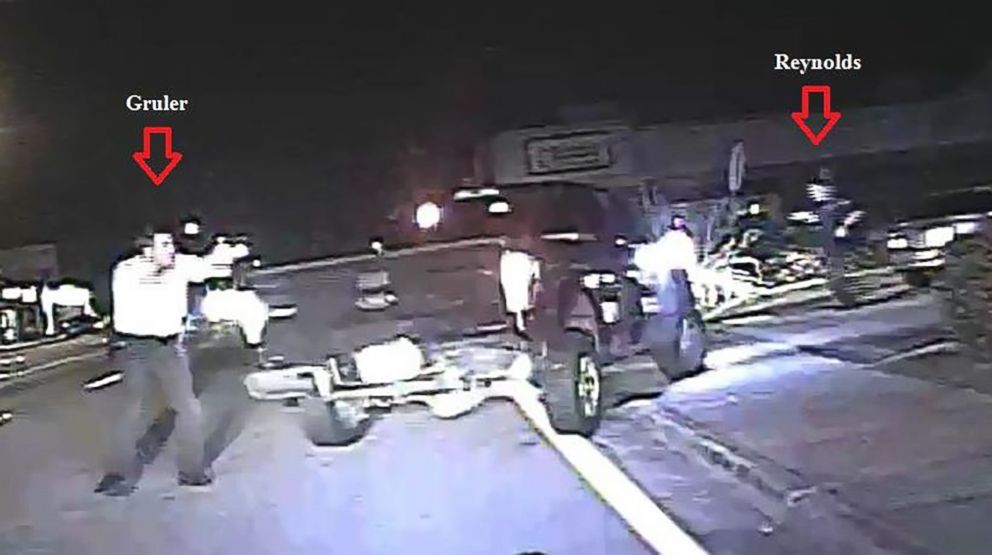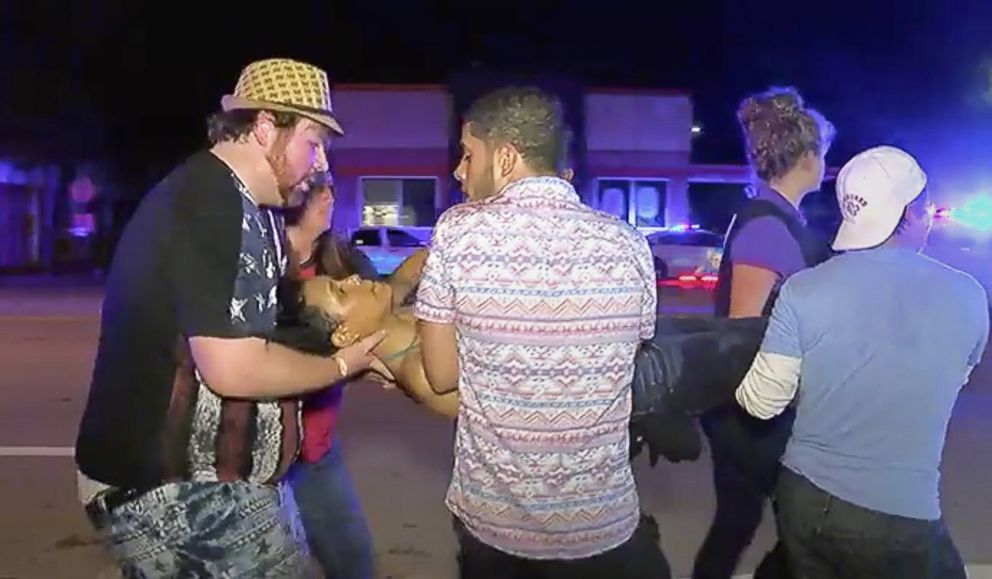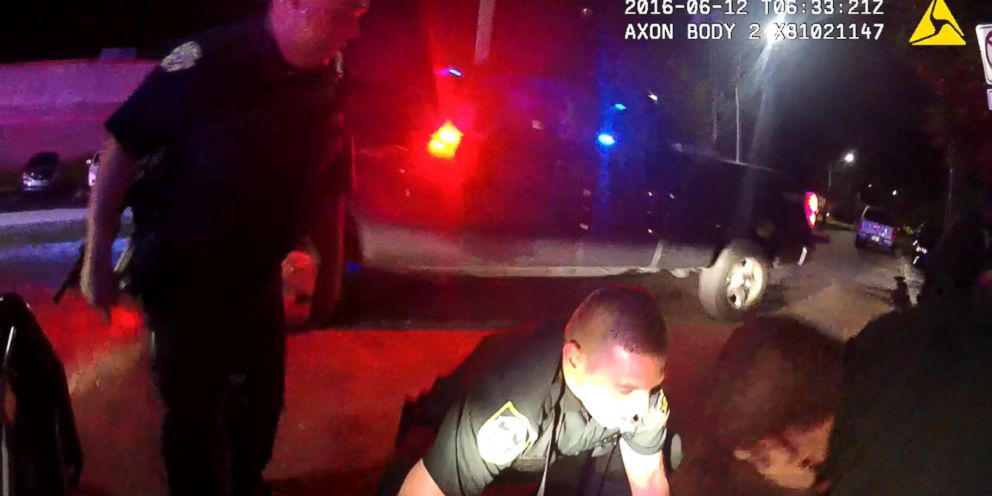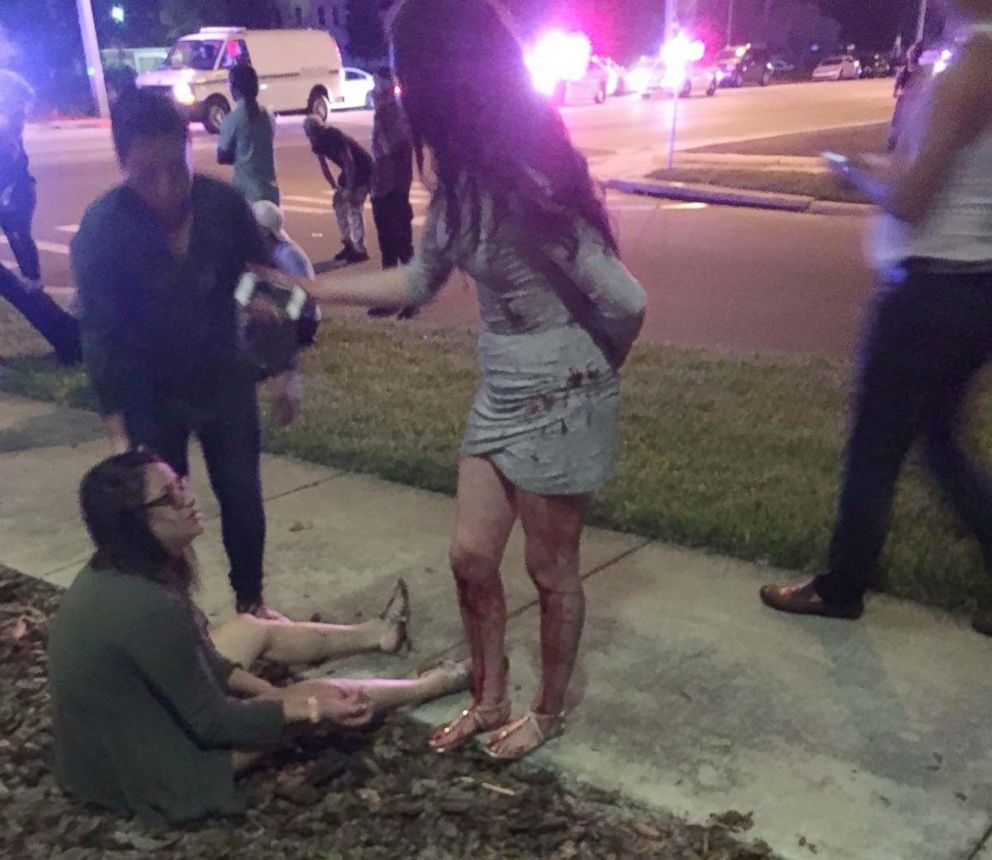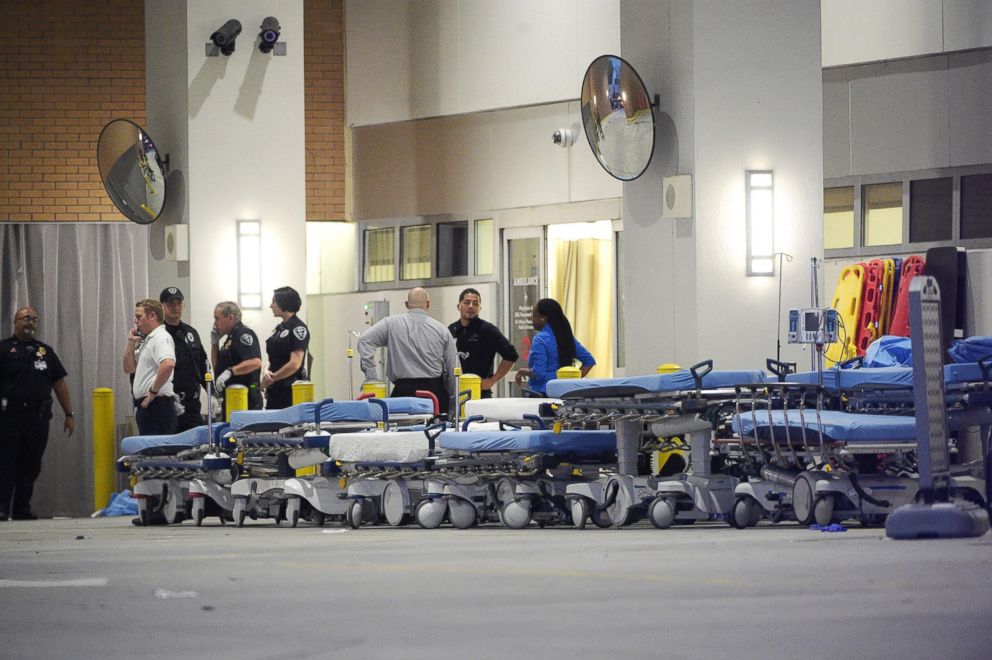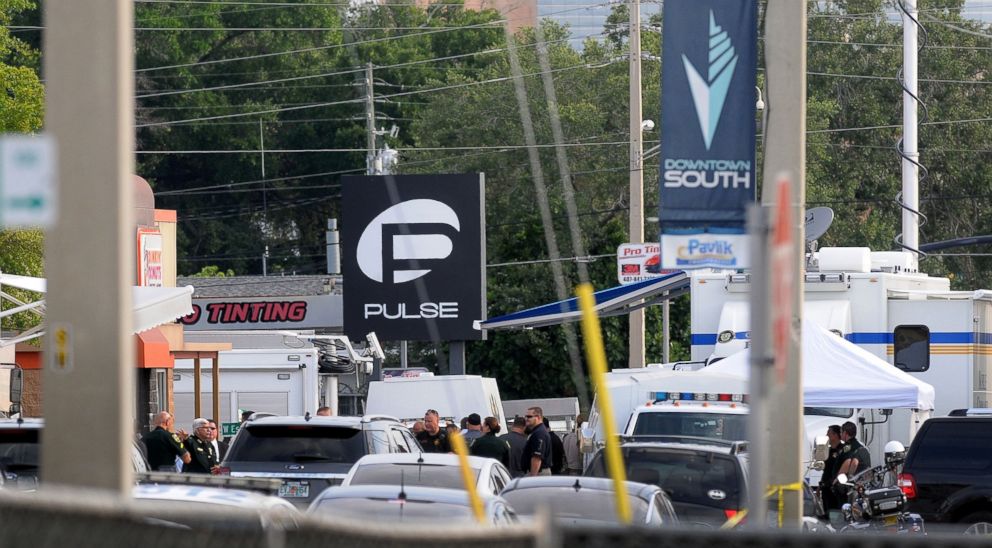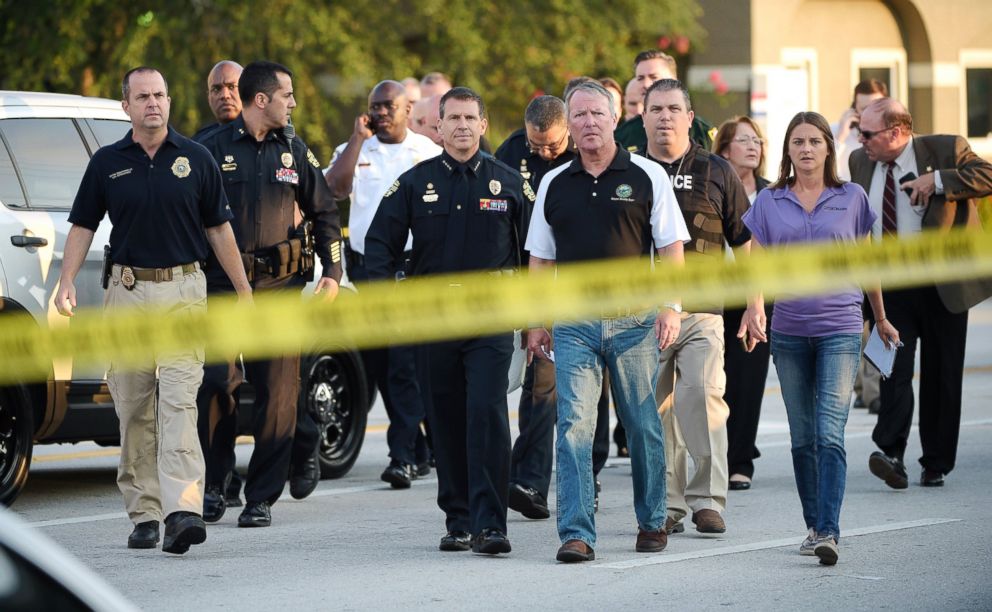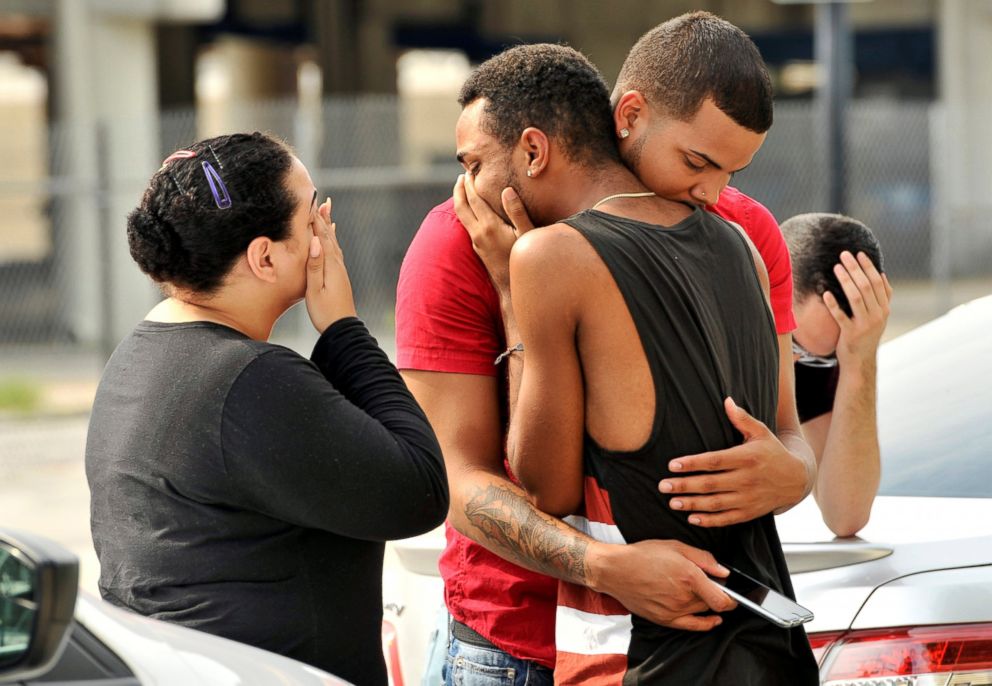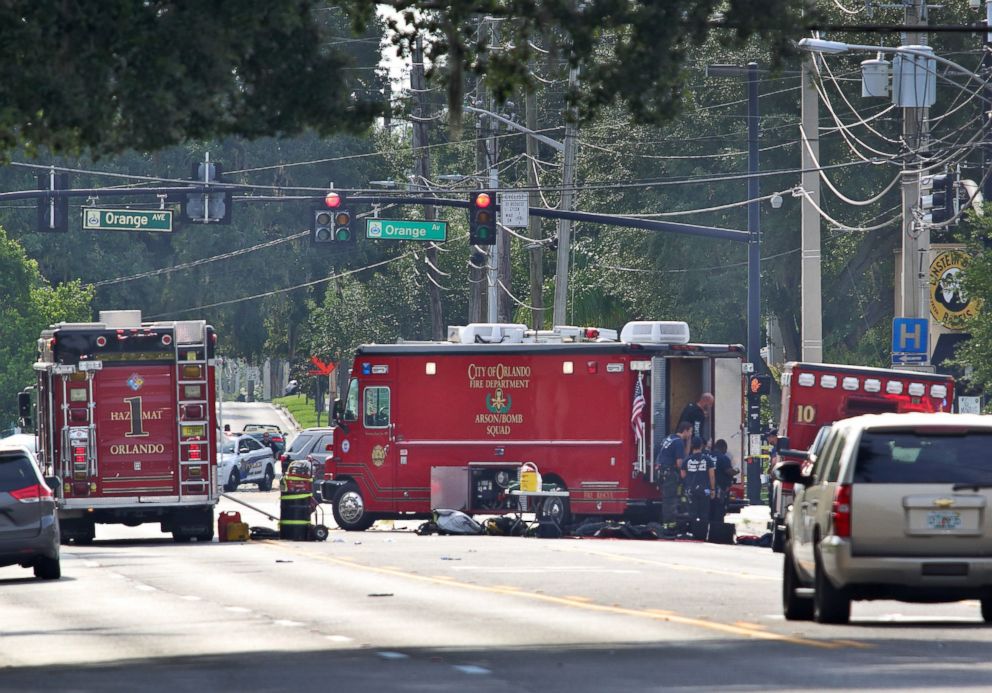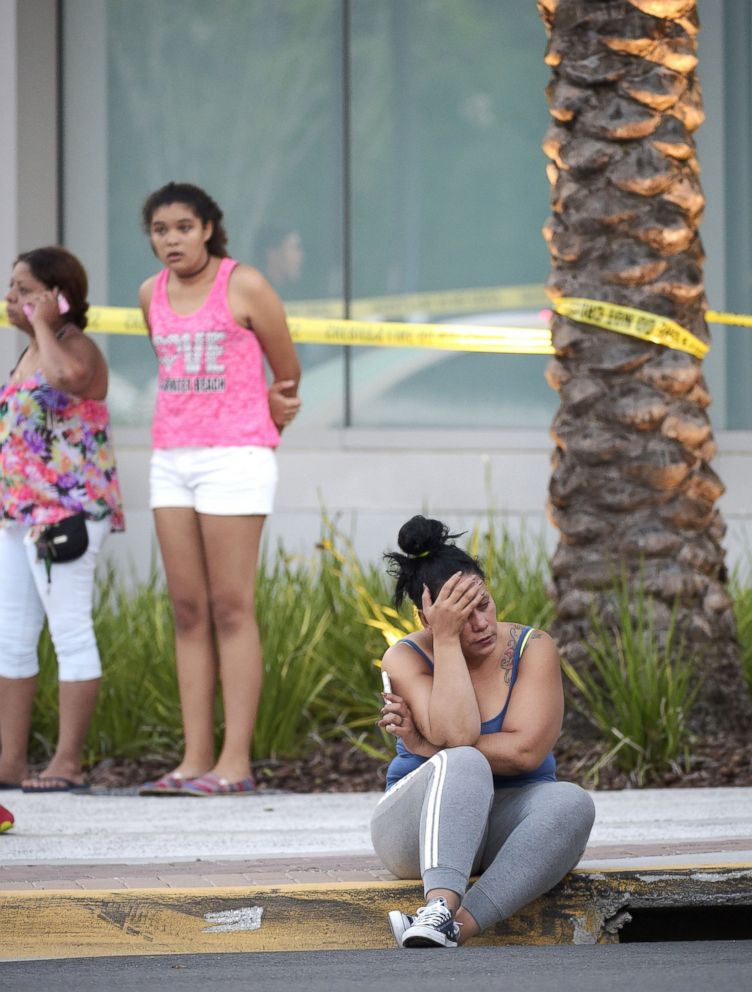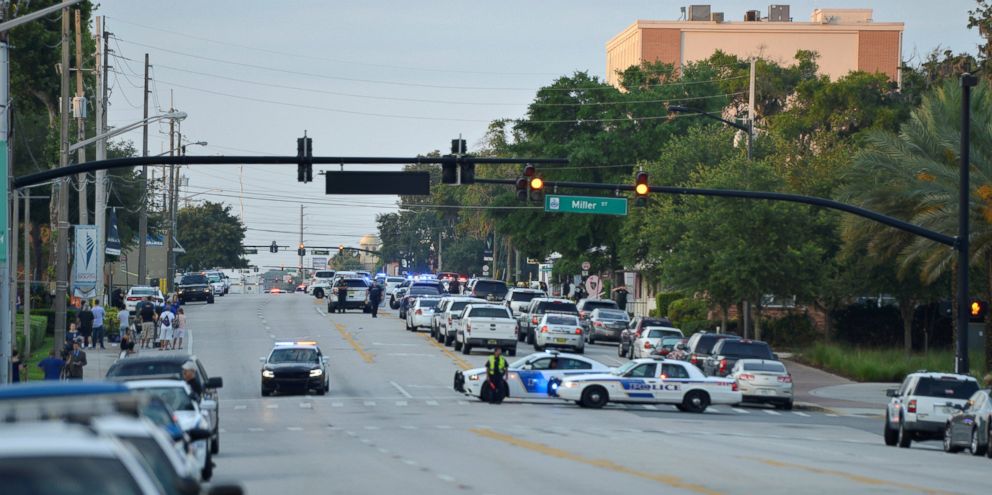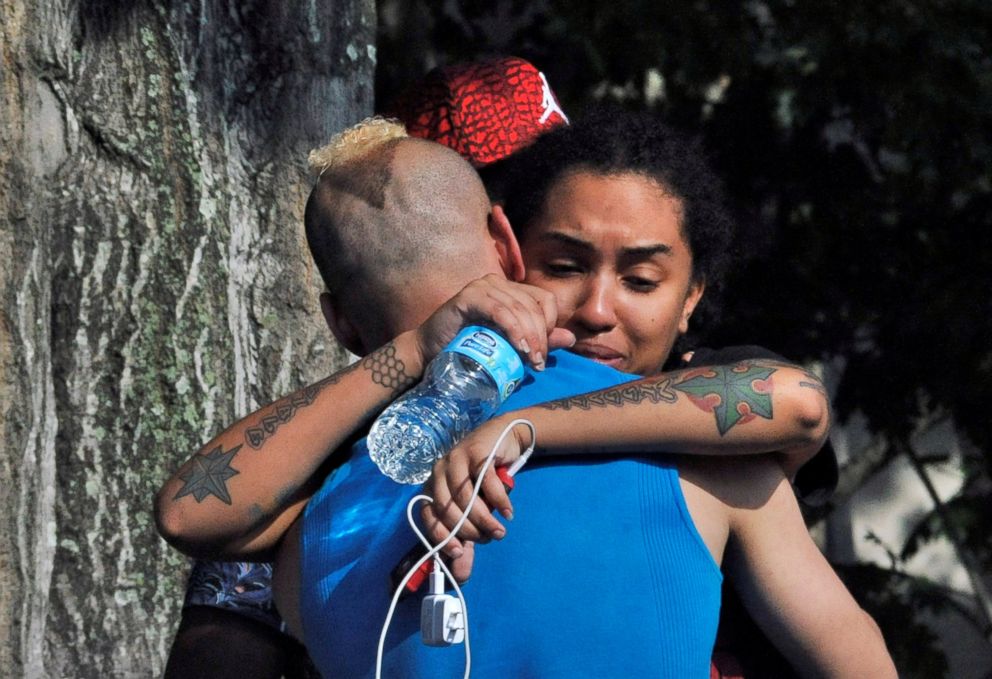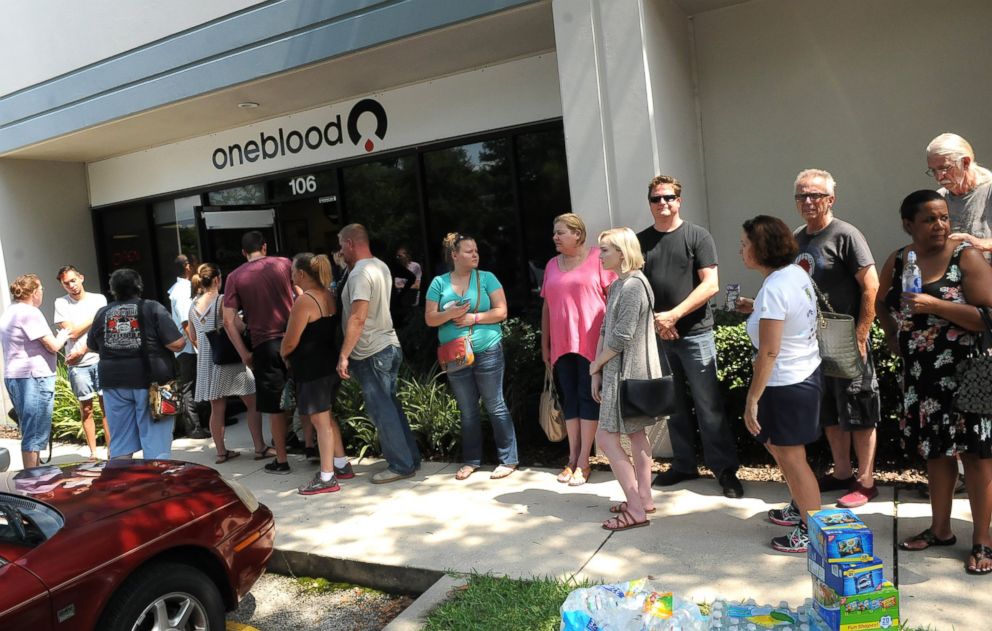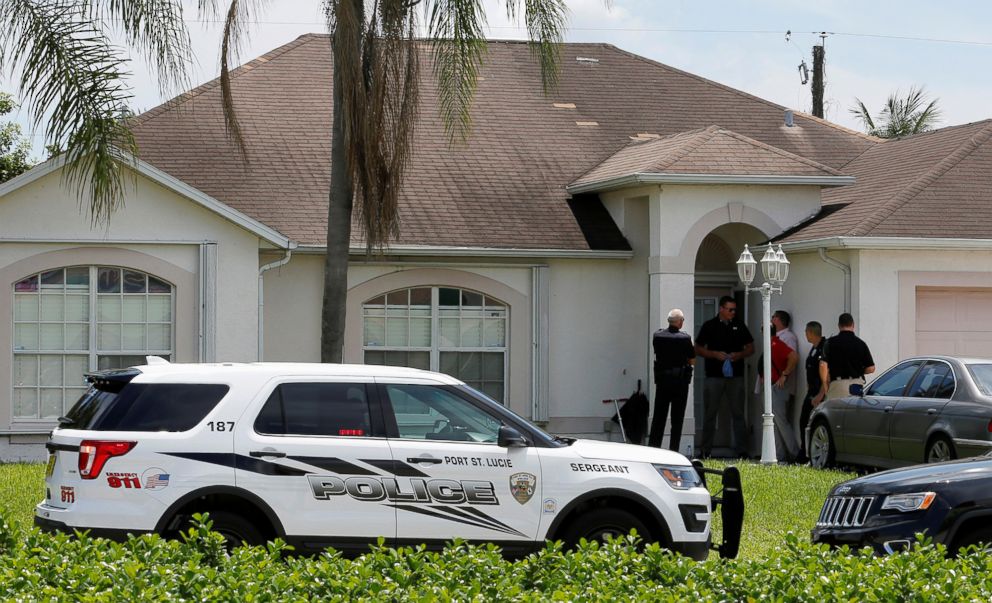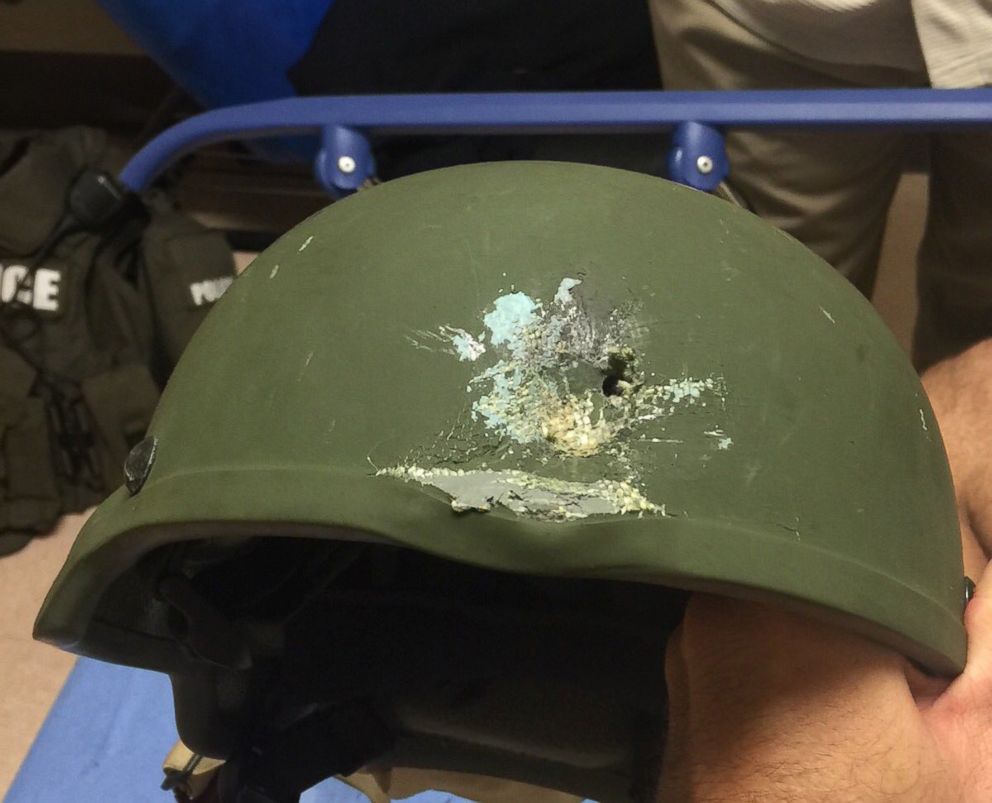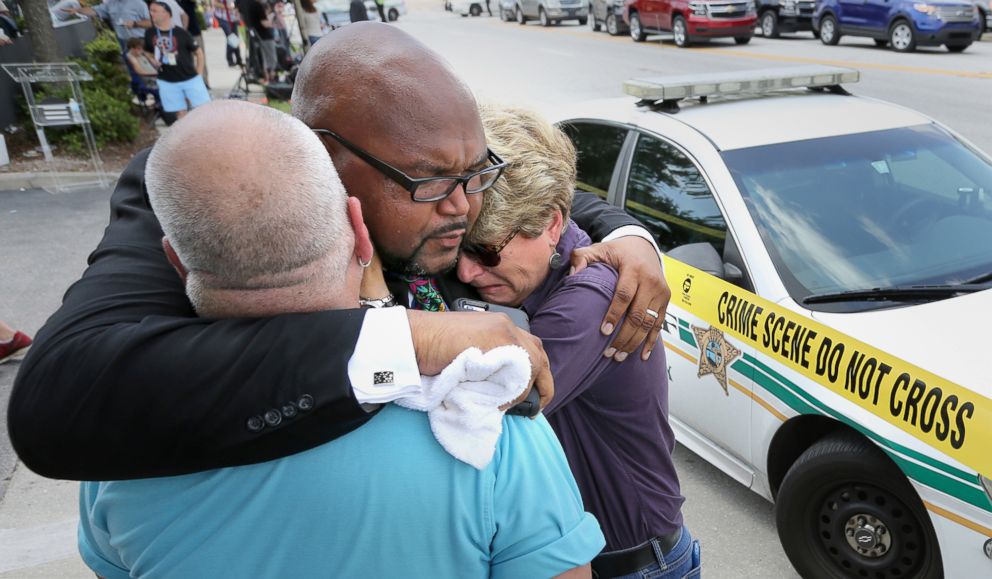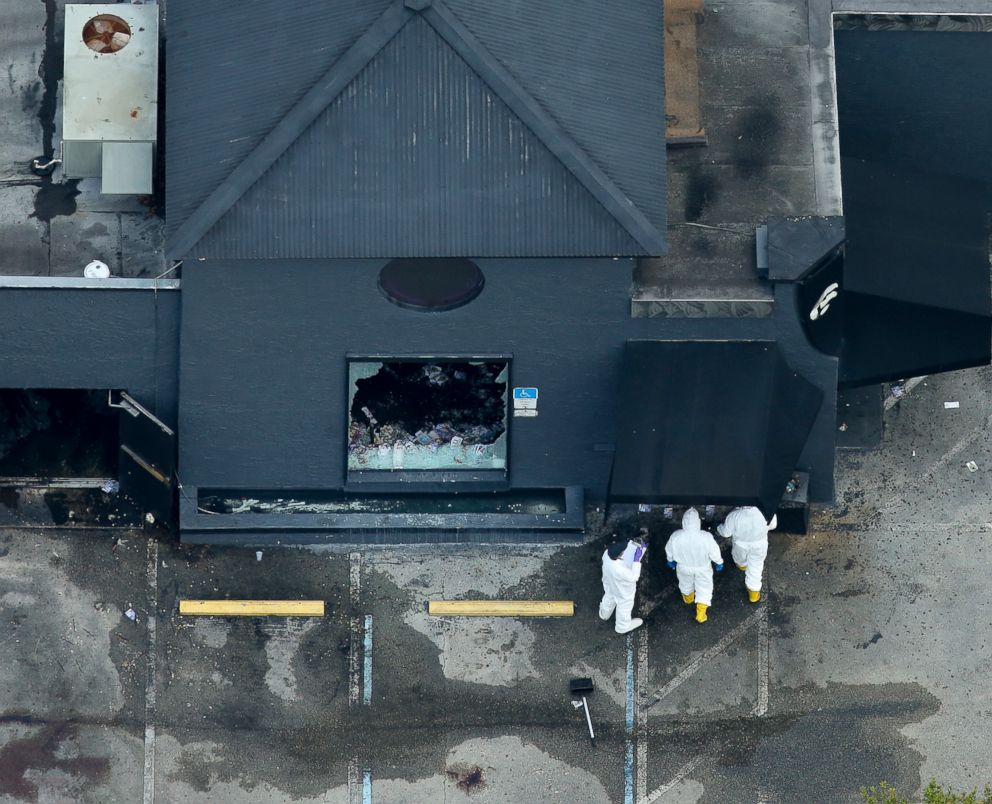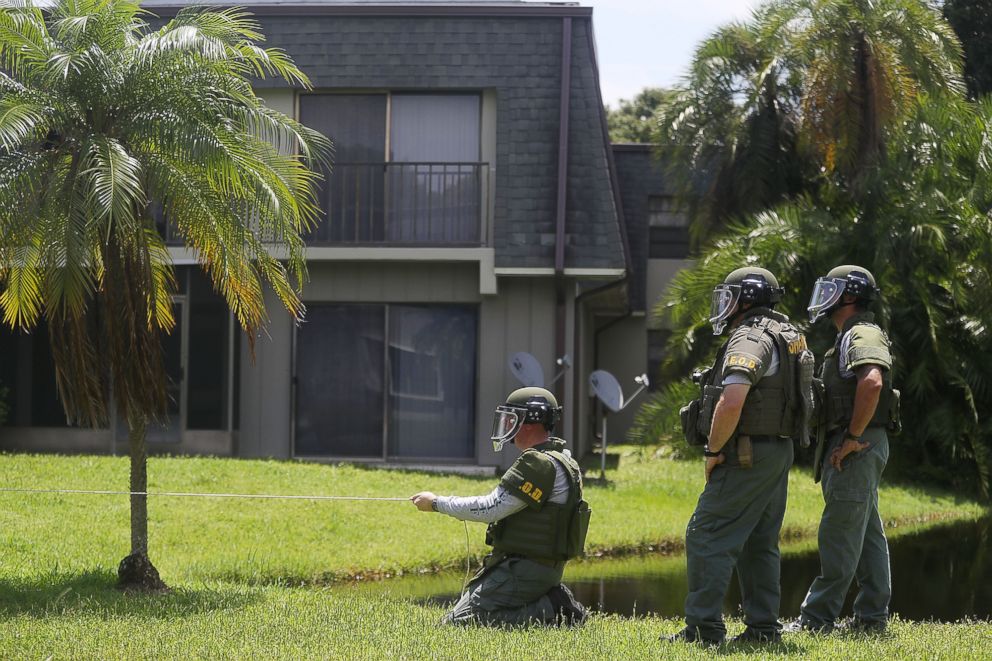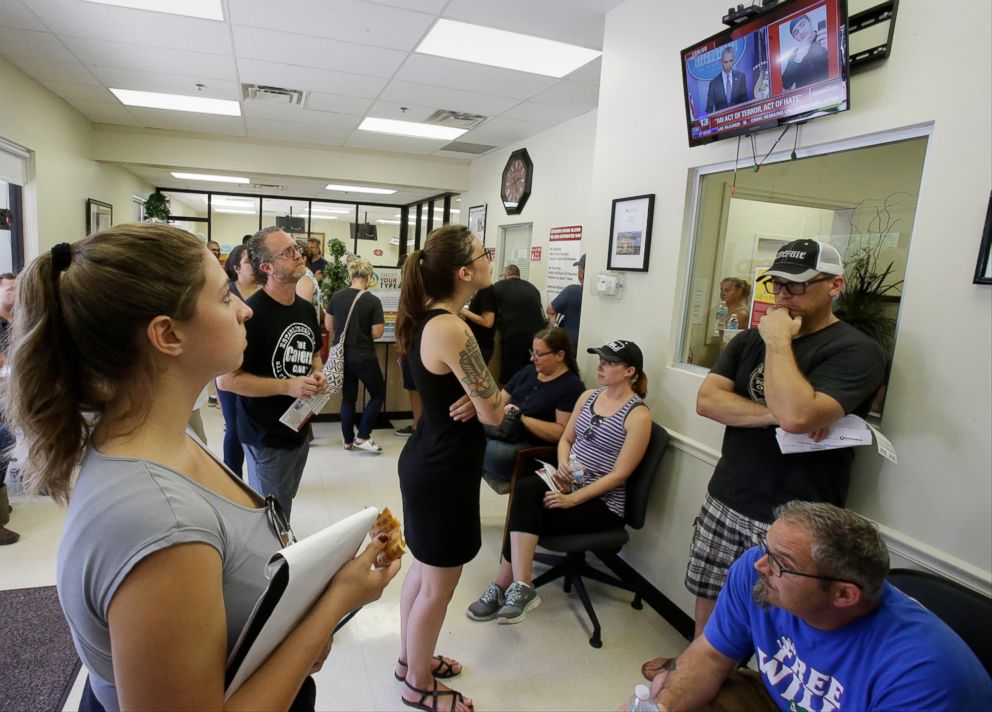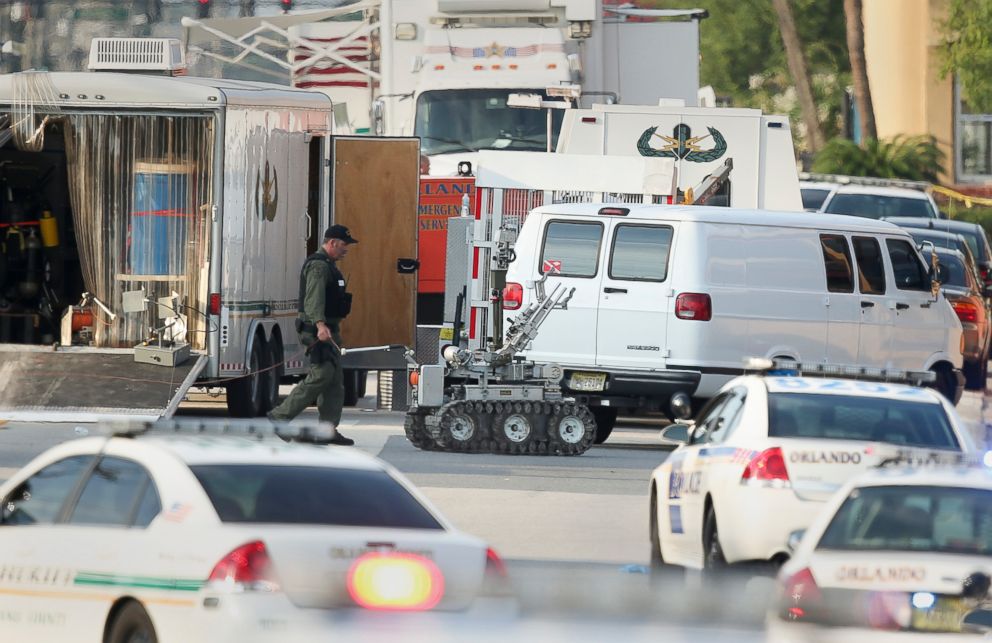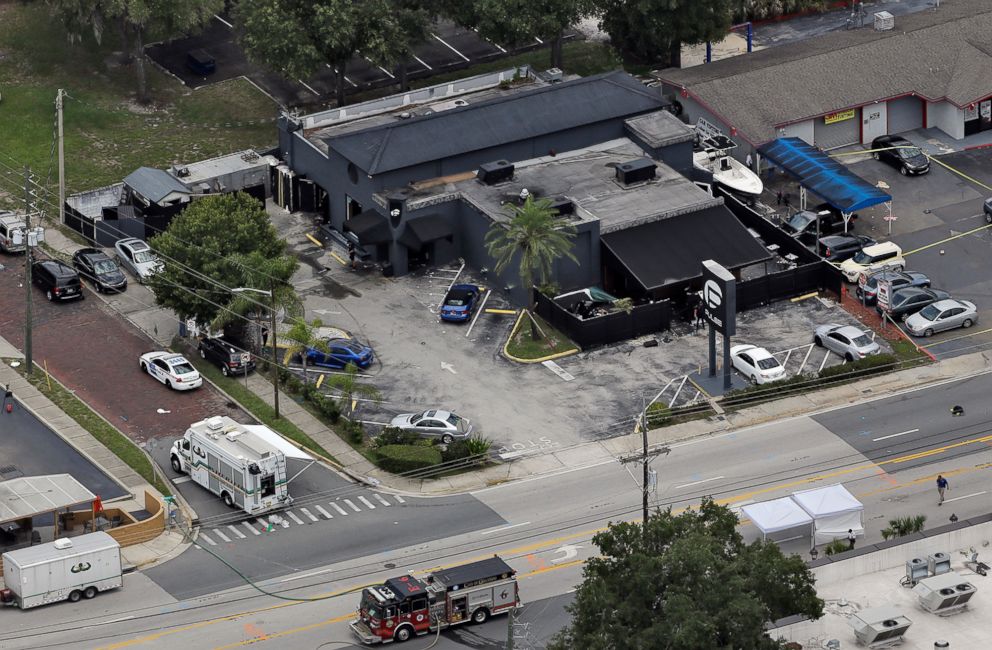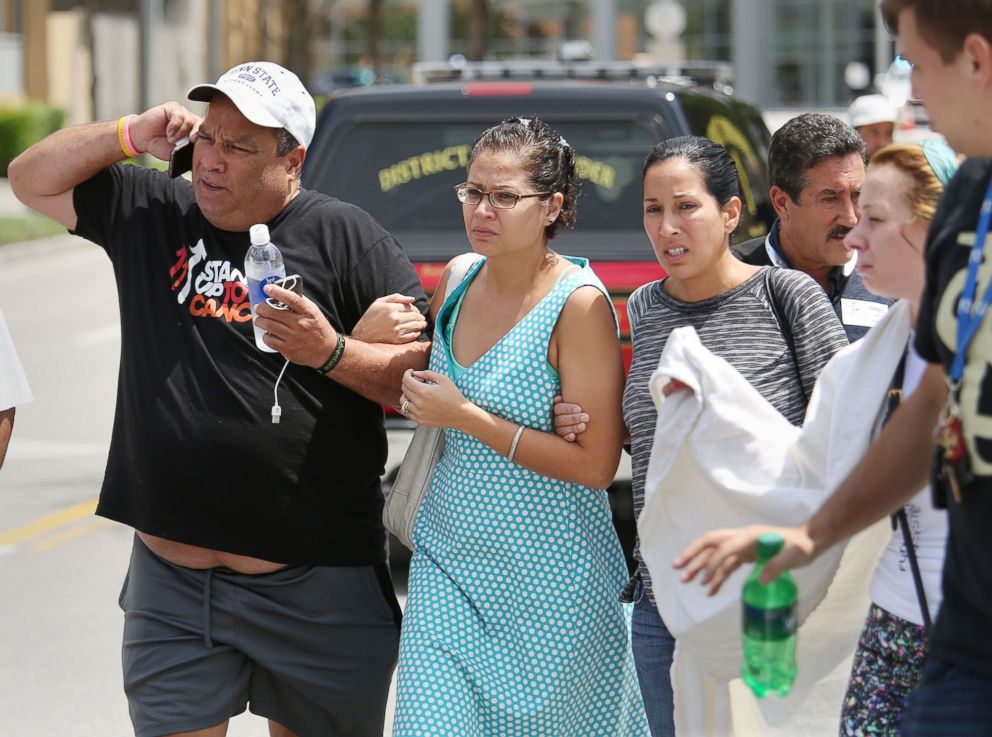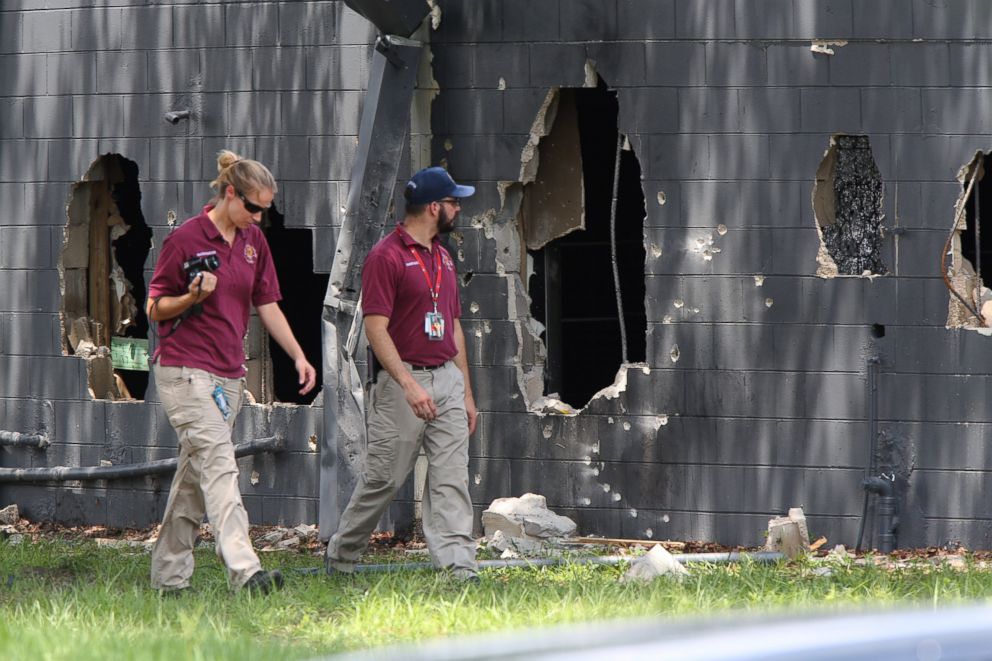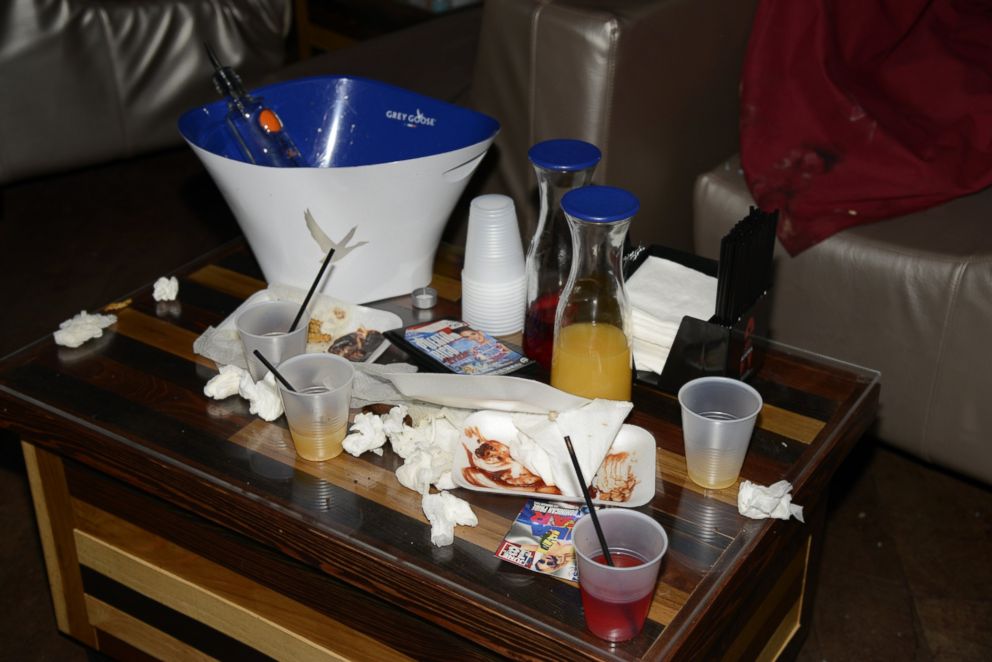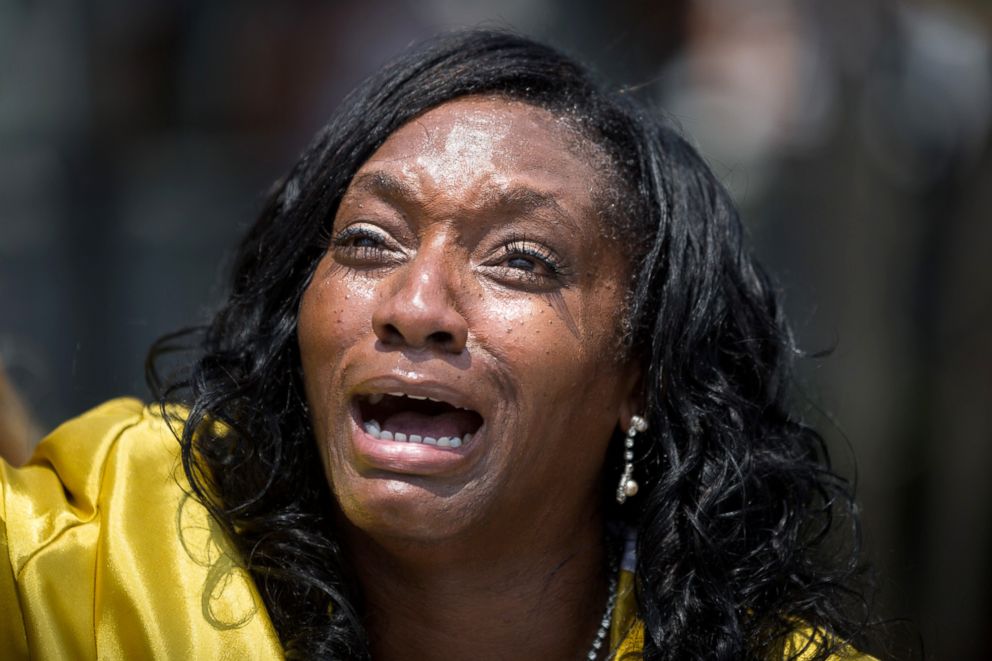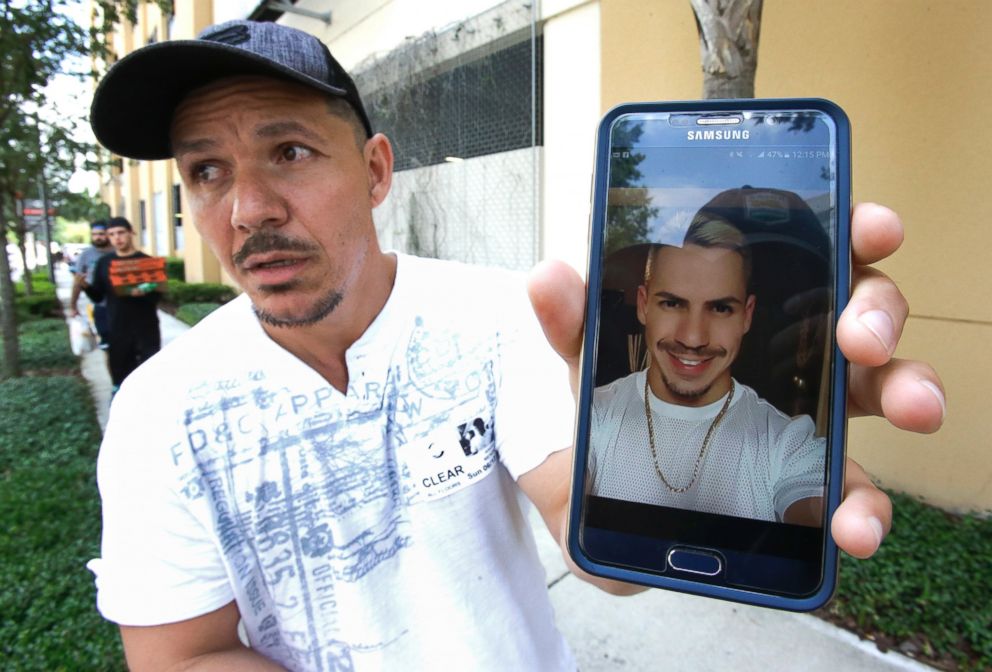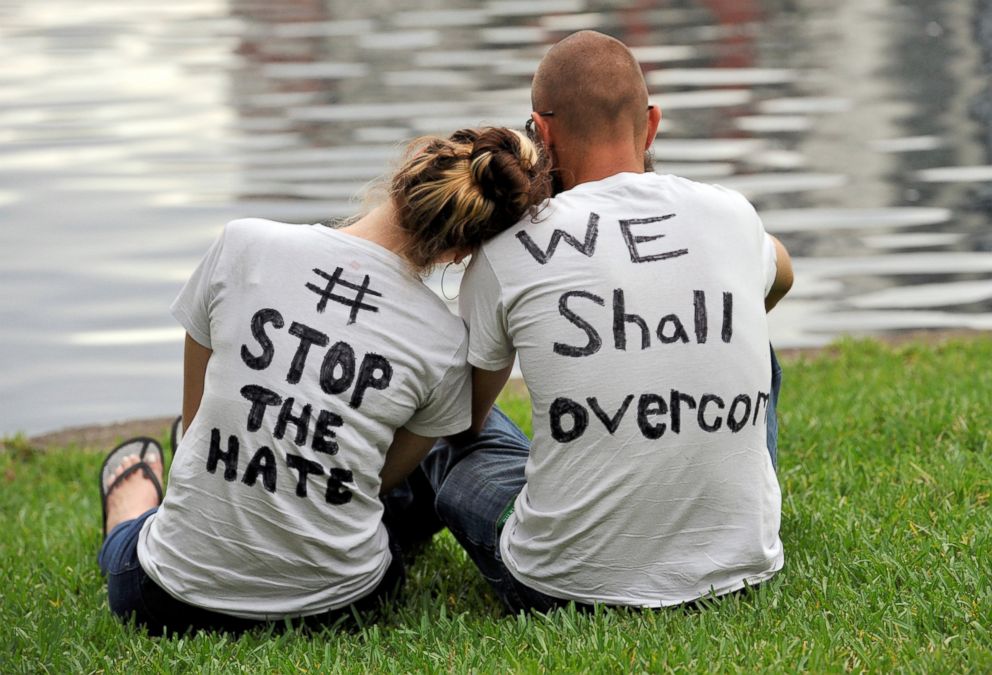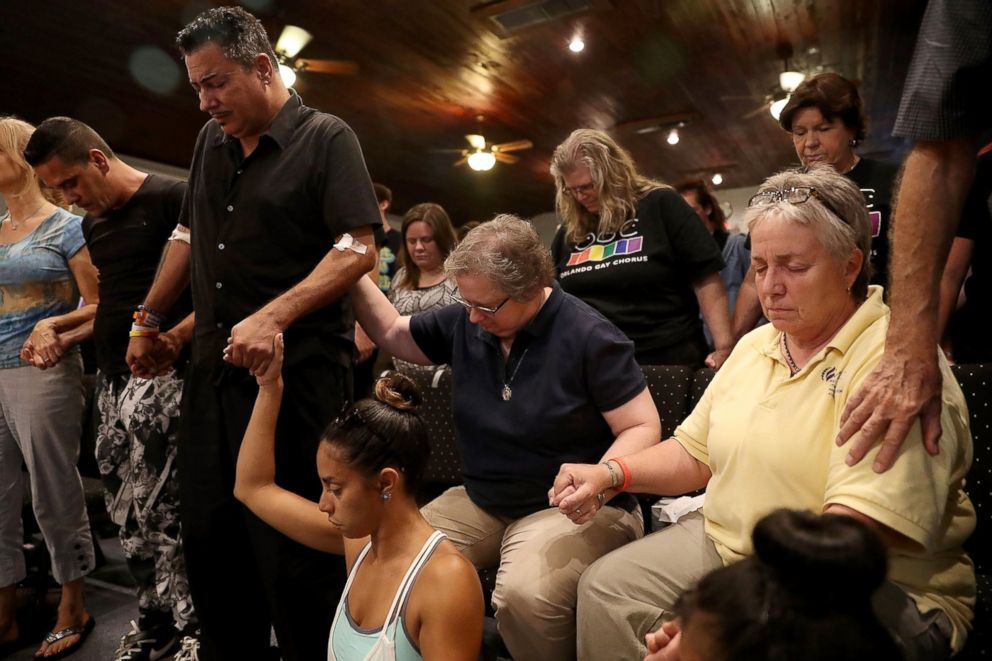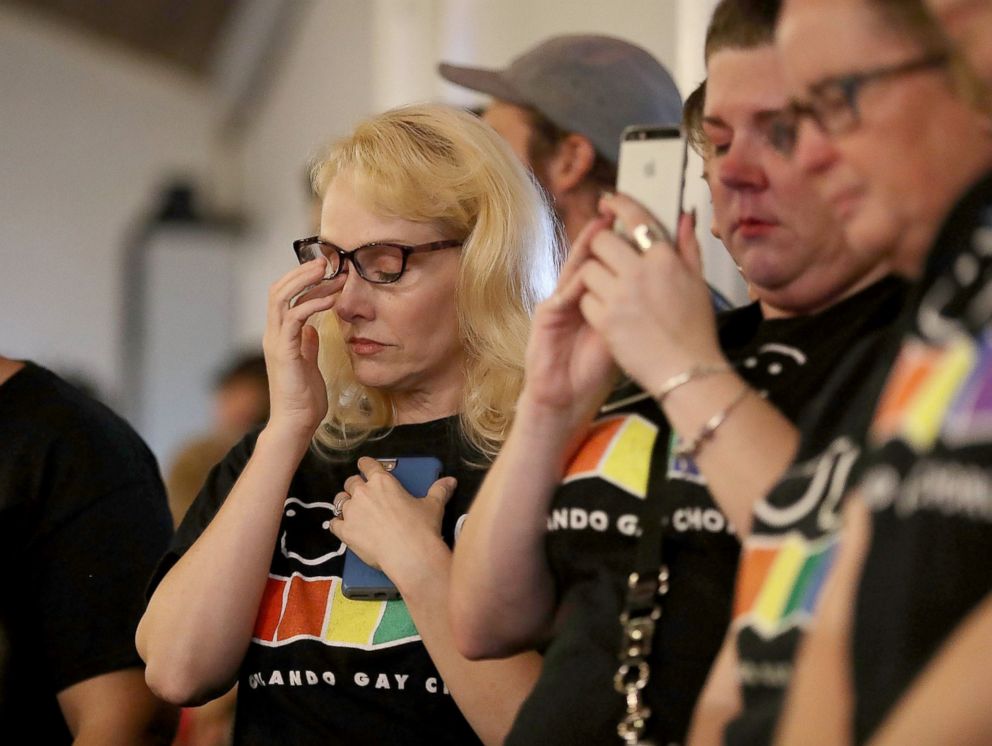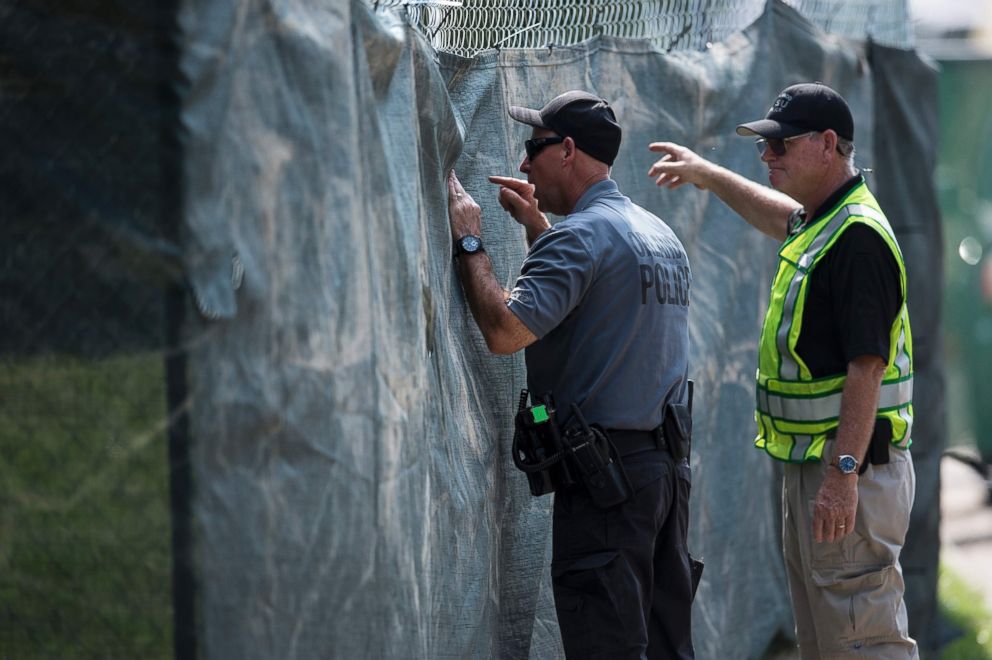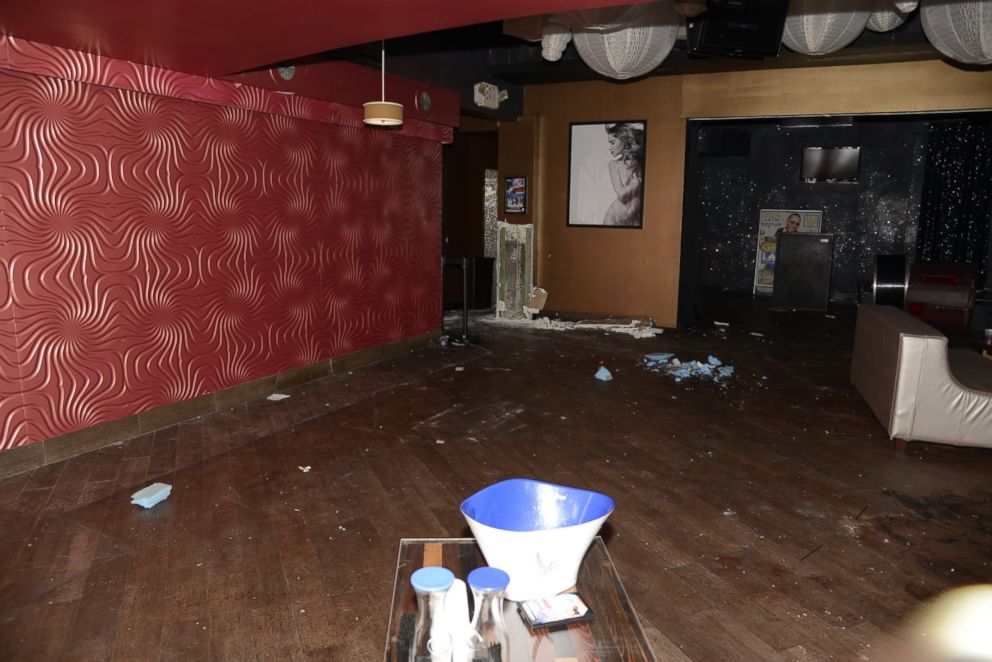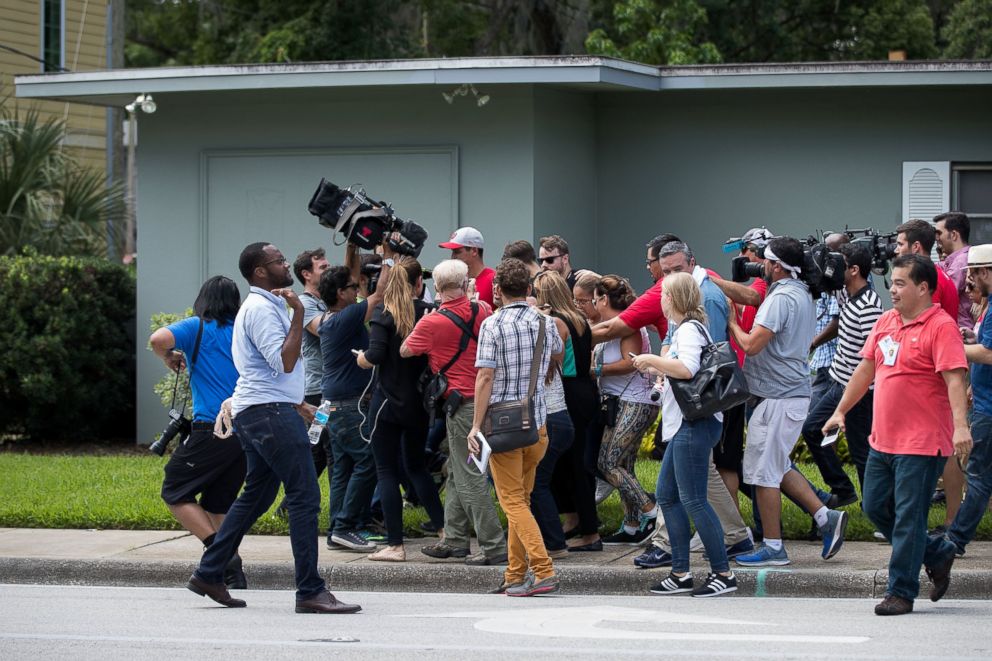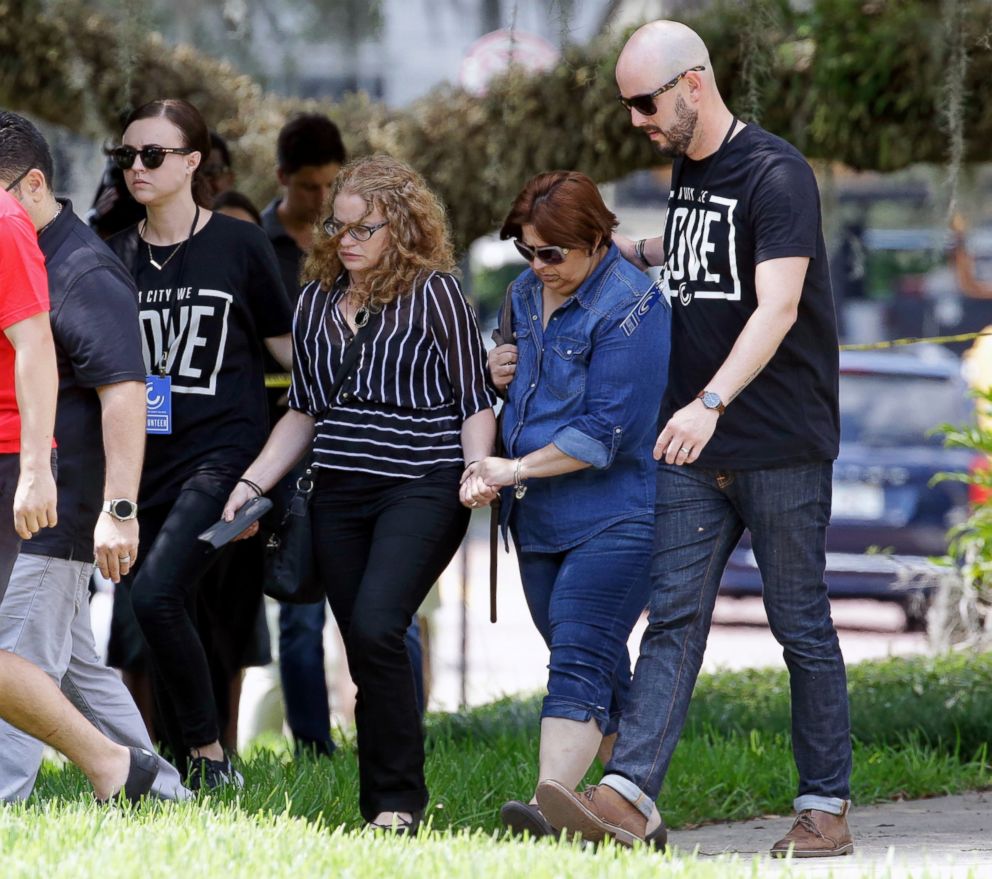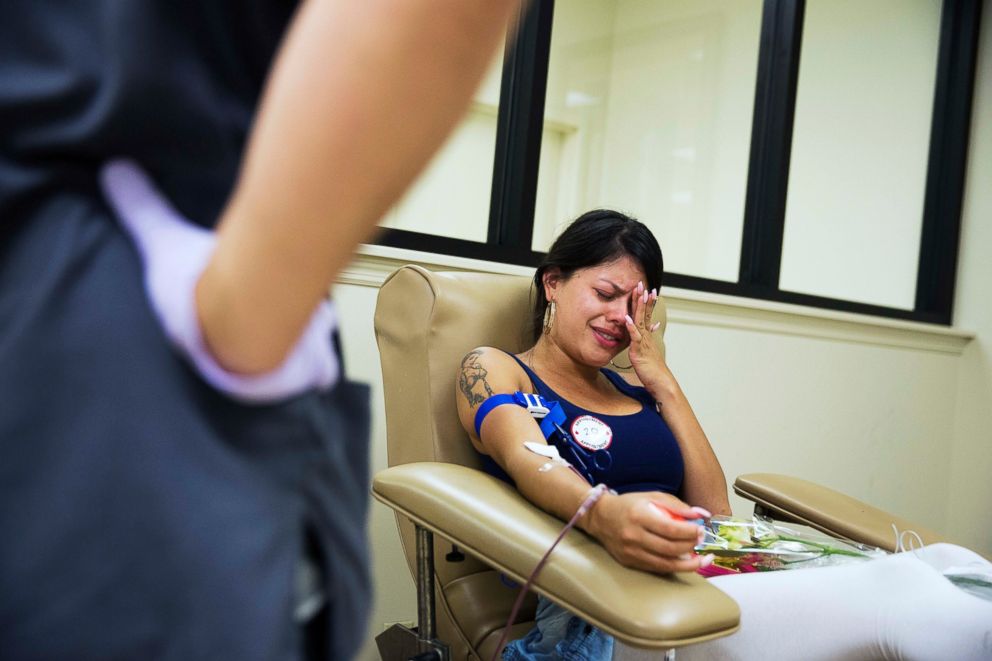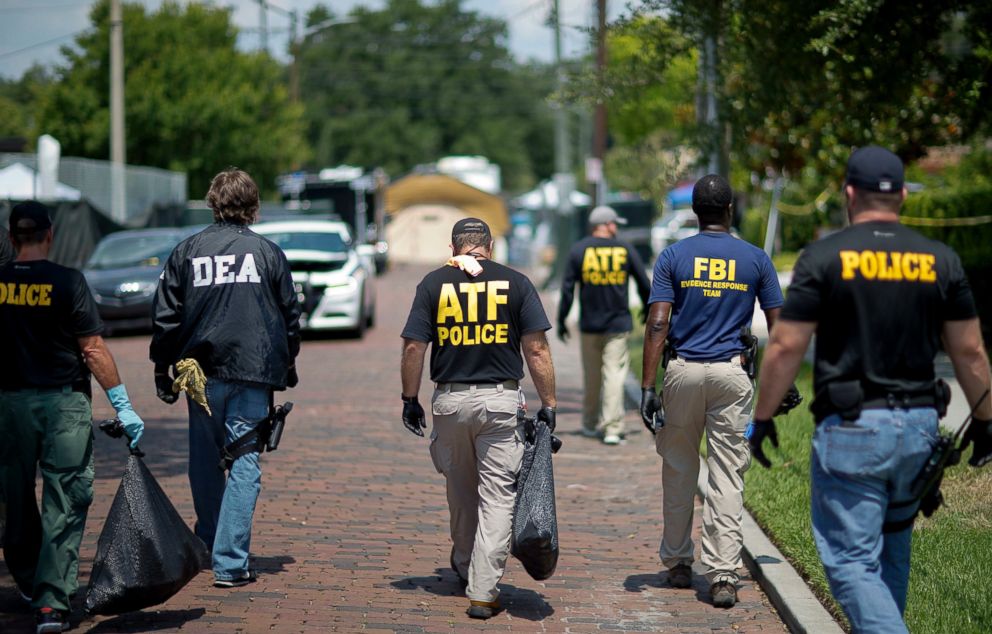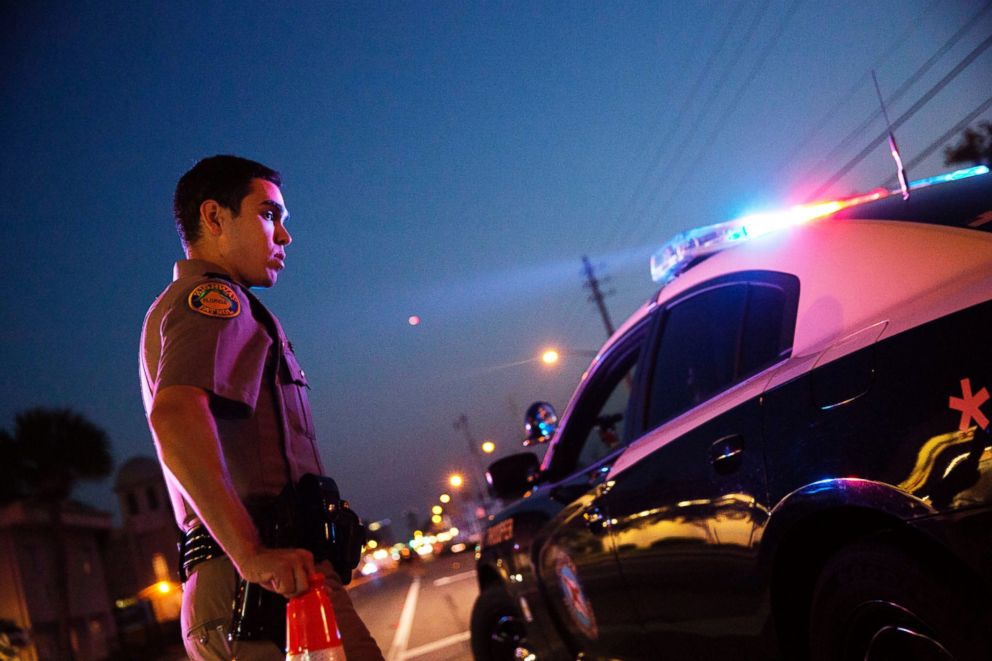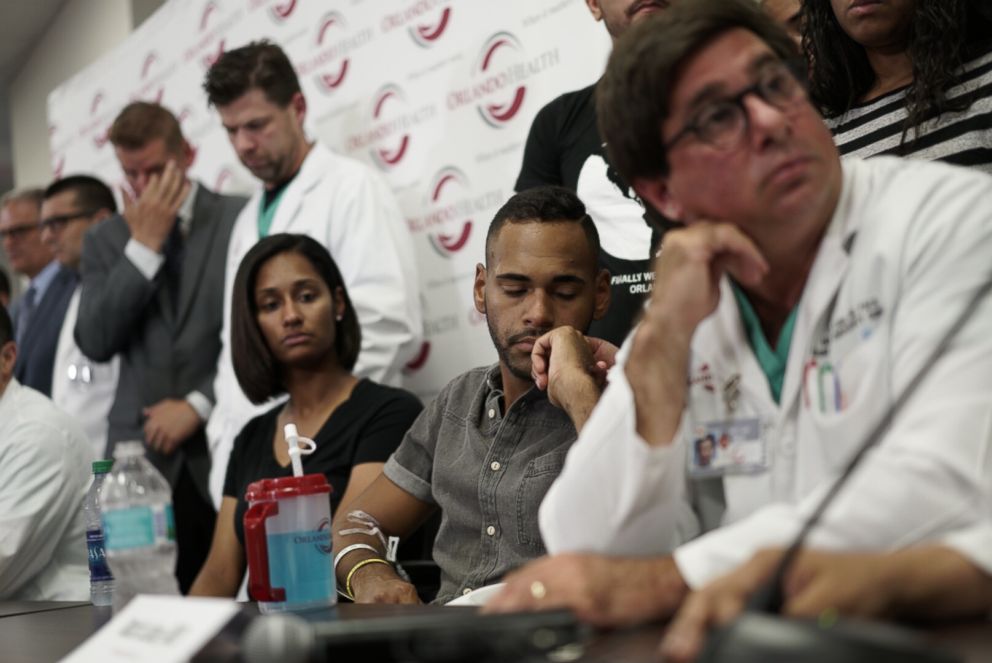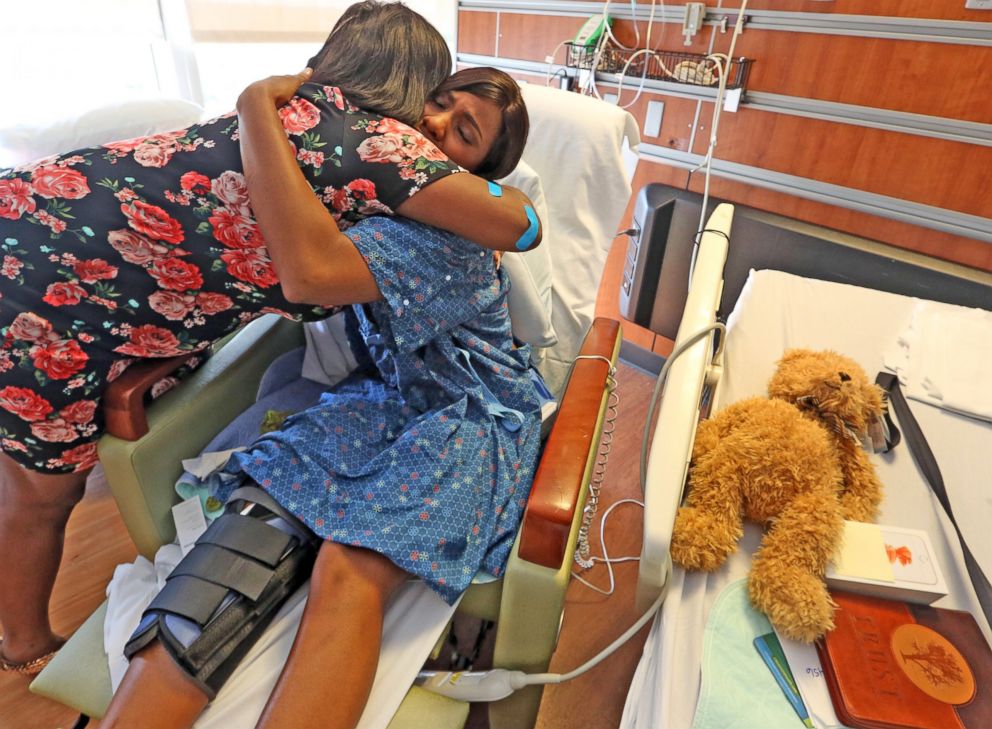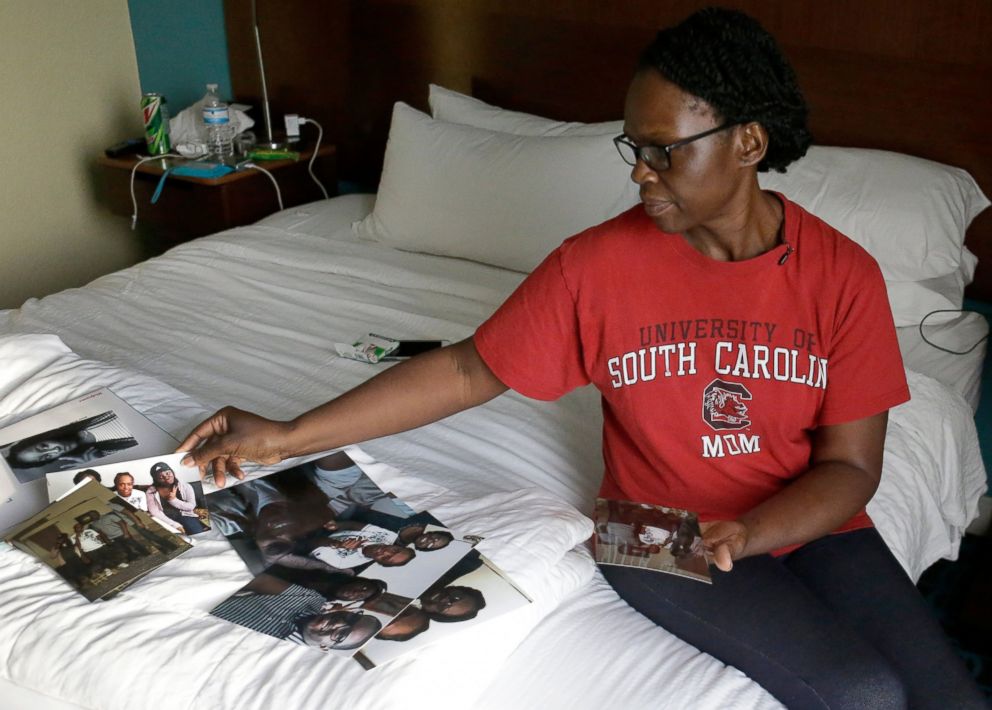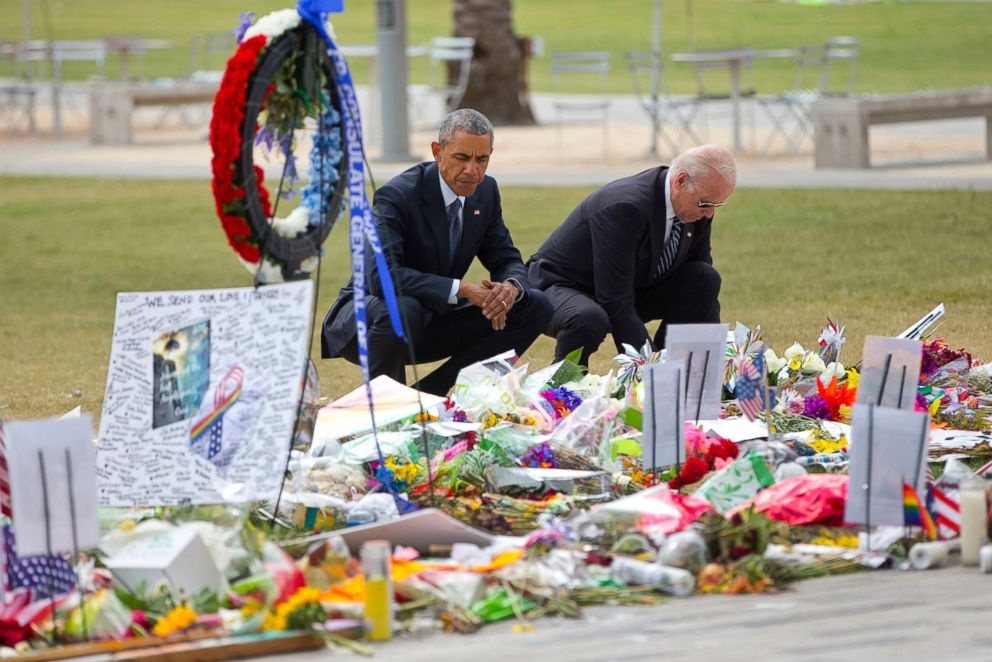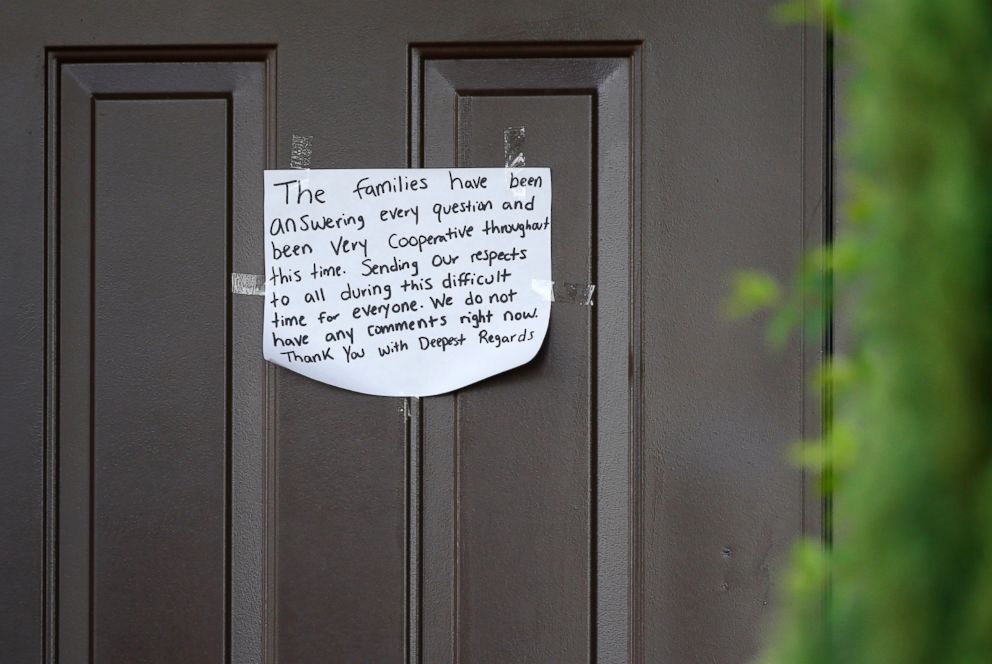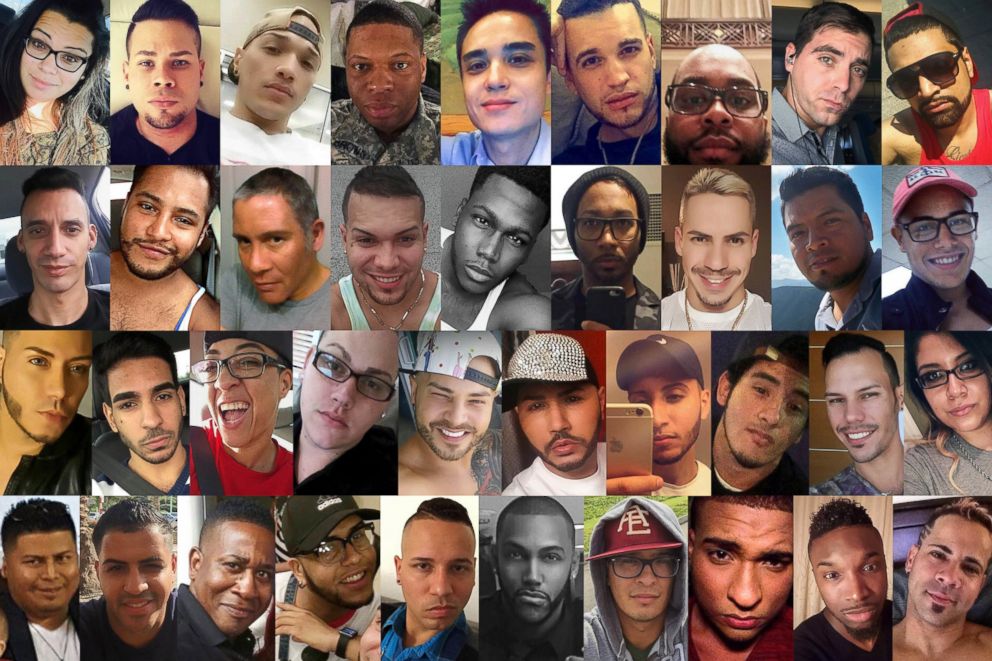Orlando police release new body-camera video from Pulse nightclub shooting
The Orlando police released 11 hours of new body camera footage on Wednesday.
— -- The Orlando Police Department released 11 hours of new body camera footage on Wednesday from inside the Pulse nightclub on the night of the worst mass shooting in modern American history, almost one year ago.
The footage contains dramatic scenes of chaos and carnage as first responders tried to save the wounded and hunt down the shooter, who killed 49 people in the name of the Islamic State.
In a series of interviews before the release of the footage, broadcast Wednesday on "World News Tonight With David Muir" and "Nightline," first responders and survivors told ABC News that the memories of that night and the emotions stirred by them are still raw.
“Several of us commented that this was going to change the city forever,” said Roger Brennan, the police department’s commander on the scene, “and probably change what we do forever.”
By early Saturday, June 12, it had already been a violent weekend in Orlando. Little more than 24 hours earlier, a young singer named Christina Grimmie was shot and killed while signing autographs for fans after her performance at the nearby Plaza Live theater.
That Saturday, Pulse, a popular spot for the city’s gay community, was packed with patrons, many of them young revelers eager to forget the previous night’s tragedy.
“We were all in a great mood,” said Jahqui Sevilla, a young woman who was at the club with friends. “We were in the club dancing. It was, like, one of the best nights I had — that turned into the worst day of my life.”
Orlando Nightclub Massacre
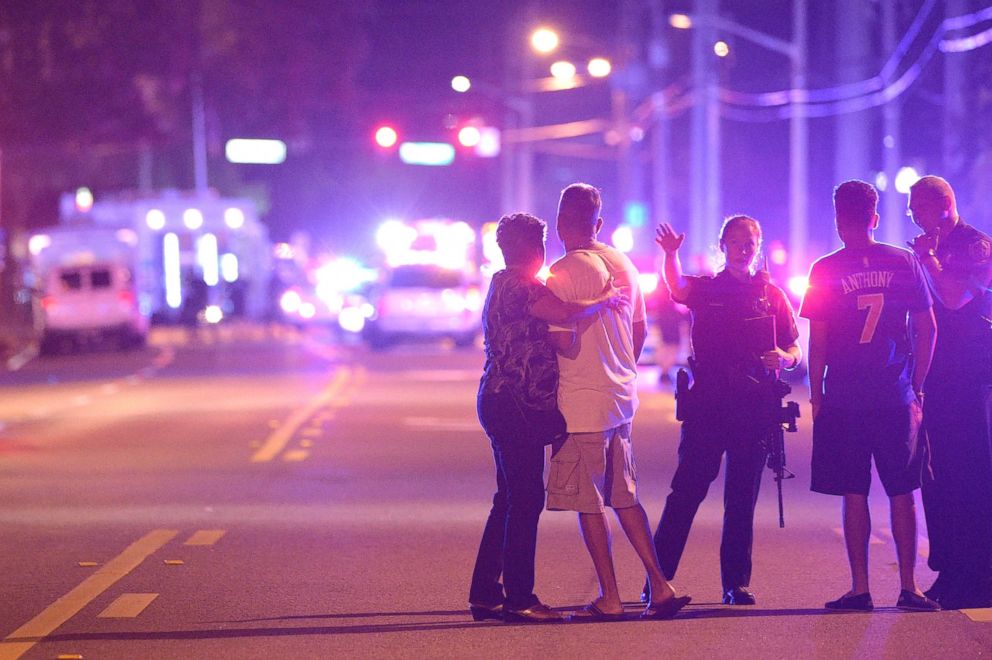
Just after 2:00 a.m., a man named Omar Mateen, a 29-year-old American-born son of Afghan immigrants, entered the club, armed with a military-style assault rifle, and opened fire. A security guard from Port St. Lucie, Florida, he was an angry and troubled man with a history of violence and failure.
An off-duty police detective working security at Pulse radioed in, and less than a minute and a half later, backup units began to arrive. One officer, Graham Cage, heard the call and jumped on his bicycle. He ran into the club while everyone else was running out.
“I had a helmet, but a bicycle helmet,” Cage said. “It’s not going to do a whole lot with that.”
As patrons rushed for the exits, the shooter rapidly fired shots in the club. The bullets missed Sevilla but hit the two friends she was standing with, one fatally.
“He had a gunshot wound to his chest,” she said. “That’s when I saw that he was injured. He was nonresponsive.”
The first responding officers returned fire, forcing the shooter to retreat farther into the club. As those officers pursued him, they passed dead and wounded people everywhere.
Police training calls for officers to head straight to an active shooter, even if it means ignoring victims.
“A person reached up and asked for help, but at that point, we didn’t know where the shooter was, if he was detained, if he was deceased or what was going on,” said Kyle Medvetz, one of the officers who responded. “So, as much as I wanted to help, I could not help him until we know for sure the shooter was detained, contained or deceased.”
The shooter barricaded himself in a bathroom with several hostages — which, according to Maj. Mark Canty, who led the Orlando SWAT team, required the police to change their strategy.
“This went quickly, very, very quickly from an active shooter to what we call a barricaded gunman to a hostage situation,” he said.
The shooter was still inside, cornered and dangerous, but rather than immediately storm the building, Canty decided to wait. It was a decision that some would later criticize, as it would take three more hours for police to gain full control and get all the wounded to safety.
Chief John Mina, in the command post, however, said it was the right call.
“During that whole three hours, we were in there saving people from the dance floor, from dressing rooms, from the other bathroom,” he said. “We took 22 people out of the front bathroom. Once we were inside that club, there were no more gunshots until the final assault.”
Police release new body-camera footage from Orlando shooting
Half an hour after he first opened fire, the shooter called the Orlando Police Department dispatch center.
“I want to let you know I’m in Orlando and I did the shooting,” Mateen said. “I pledge my allegiance to Baghdadi on behalf of the Islamic State,” referring to Abu Bakr al-Baghdadi, the leader of ISIS.
Sgt. Andy Brennan, a trained hostage negotiator, was working an off-duty detail at a bar downtown that night when he responded to the radio call from Pulse and headed to the dispatch center. He engaged the shooter over multiple phone calls, listening to his rants about ISIS and Syria.
“You need to stop the U.S. airstrikes,” Mateen said. “They need to stop the U.S. airstrikes, OK?”
Meanwhile, officers used the time to get as many victims out as possible, despite concerns that the shooter might attempt to hide among the victims.
Officer James Hyland arrived in his personal pickup truck, which a partner quickly turned into a makeshift ambulance.
“We didn’t have any ambulances or anything there. He just started loading people up,” Hyland said. “And he was just going back and forth, doing one run after another after another after another.”
Trapped victims who could not be reached used their cellphones to call loved ones, who then called 911 to plead for help on their behalf.
“My girlfriend’s in the bathroom,” said one caller. “There are now four dead in the bathroom, and two more are bleeding out. If somebody doesn’t get there soon, they’re going to die.”
“Yes, my son is shot in the club in the Pulse in Orlando, and he’s still in the bathroom, where he’s bleeding,” said a sobbing mother. “He got shot, and nobody’s going in for him.”
The rescue operation continued until Andy Brennan, the negotiator, heard words from the shooter that quickly changed the dynamic for everyone in the nightclub.
“By the way, there is some vehicles outside that have some bombs, just to let you know,” Mateen said. “Your people are going to get it, and I’m going to ignite it if they try to do anything stupid.”
He escalated the threat, saying he had “a vest,” before abruptly hanging up.
“When you start talking about explosives,” said Roger Brennan, the scene commander, “now you have to pull your resources back.”
The information circulated among the officers on scene, but not a single officer pulled back to safety.
“We were in it to win it, you know?” Medvetz said. “And we didn’t want to leave.”
Instead, the police prepared to move in. With victims still trapped inside the nightclub and the suspect threatening to set off explosives, Andy Brennan knew he was running out of time.
In his fourth and final phone call with Mateen, Brennan tried again to persuade him to come out of the nightclub without his weapons, but after making his demands, Mateen hung up.
It was after that call that Mina decided his officers would have to storm the back bathrooms of the nightclub.
“I wasn’t going to sit here in this command post and hear that explosion, knowing that he was going to blow up everyone, all those hostages inside that club, because there were many hostages left inside,” he said.
After getting Mina’s go order, the SWAT team moved toward the back bathrooms, where they knew hostages were hiding.
“They said, ‘Hey, we’re going to push the air conditioning unit in, but before we do, you guys have to catch it because if you let it drop or make any noise, the killer is going to know where you’re at, and he might shoot through the walls and kill you,’” said Canty.
He said the hostages reached up to grab the air-conditioning unit when it was pushed in and were able to set it down without making a sound. Eight hostages were able to escape through that opening, police said.
“I think the first person that came out was the person that was injured,” Canty said. “They were able to get out by themselves.”
First responders to Pulse shooting describe eerie scene inside club
In a different area of the nightclub, Jahqui Sevilla also made her escape, carrying her friend who was shot in the chest. He later died from his injuries. Her father, Benigno Sevilla, an Orlando firefighter, was waiting outside for her.
“I give her a quick once-over, make sure she has all her body parts,” he said. “I knew she was one of those who could be killed or injured.”
“It wasn’t until he was there and I knew that I could kind of just, like, collapse in his arms and I would be OK,” Jahqui Sevilla said.
After the air-conditioning unit was out, police decided to move forward with their final assault. Officer Rob Woodyard drove an armored vehicle called a BearCat toward the nightclub and tore open a hole in a wall to create an escape route. SWAT team members pulled hostages to safety as they ran out.
“Every person we got out was a victory for us,” Woodyard said. “At that point, we know that we need to get these people out this building. So one by one, they’re coming out of these holes, and it’s a great feeling, seeing them come out.”
Even with the BearCat, officers said, they were still being cautious because Mateen said there were explosives. Canty said there was also a concern that Mateen would start firing on the hostages as they ran out, and they knew people were still trapped in a back bathroom.
“You’re trying to save as many people as you can,” Canty said. “There’s 13 people in that bathroom. You want to save them. There’s five with him.”
But the plan worked. Once the BearCat came through the wall, police said, Mateen stepped out into the open and started firing on the officers and the BearCat.
“It was just, like, a wall of freedom,” said Michael Ragsdale, another officer who responded. “There was 30 seconds of just the most awesome sound you could hear, because it was us returning fire towards him.”
During the shootout with Mateen, Mina said, a bullet struck Officer Michael Napolitano’s helmet. If it had been an inch lower, Mina said, Napolitano “would have been dead.” But instead, Mina said, the officer “went down to the ground still returning fire, and the other officers returned fire, killing the suspect.”
When the call went out over the police radios that the suspect was dead, Andy Brennan said, a “giant cheer went up” inside the command center.
“We all hollered, ‘Yay!’” said Bill Hammer, a dispatcher. “It was a big uproar.”
After hours of fighting, the massacre was finally over, but the officers involved felt there was little to celebrate. Mina said he and many of the officers were heartbroken by what happened.
“I was very proud of the police response, but still, you know, this person went in and killed 49 of our community members,” he said. “And so as a community, we were devastated.”
Editor’s note: Jahqui Sevilla was killed early Monday in a car crash.
ABC News’ Pete Madden, Lauren Effron, Randy Kreider, Cho Park, Margaret Katcher, Alex Gurvets and Erin Galloway contributed to this report.
